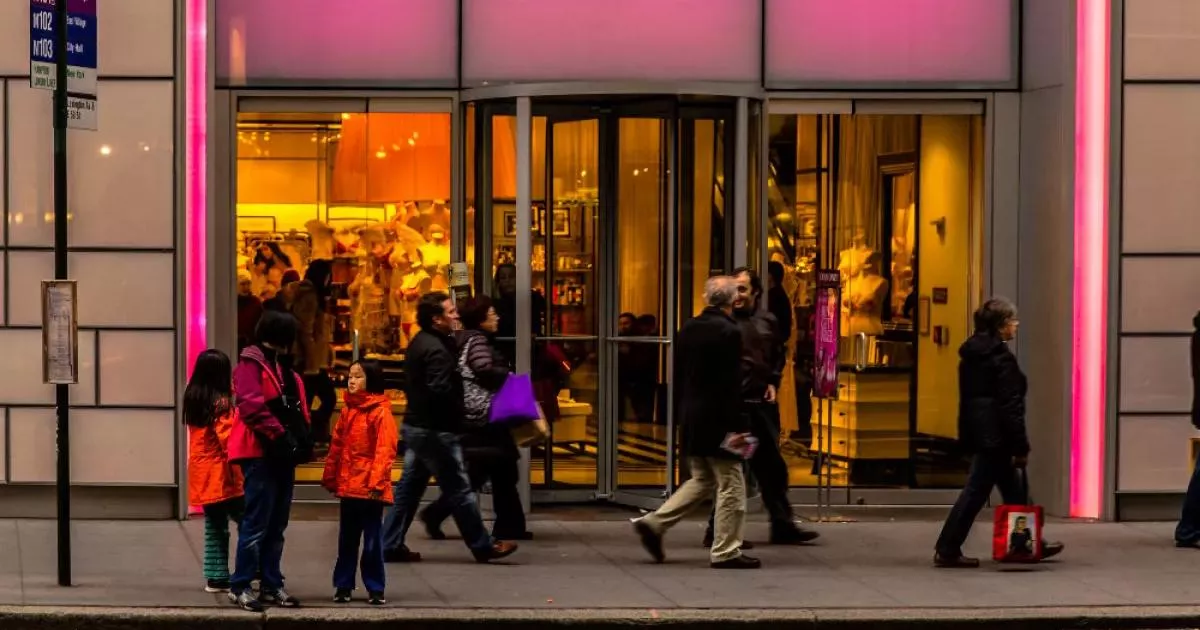Victoria's Secret is an American retailer specializing in lingerie, clothing, and beauty products. Founded in 1977 by Roy and Gaye Raymond, it was acquired by Les Wexner in 1982. Wexner oversaw its rapid expansion, establishing a prominent presence in American shopping malls. By the early 1990s, Victoria's Secret had become the largest lingerie retailer in the United States, achieving $1 billion in sales and operating 350 stores nationwide.
June 12, 1977: Victoria's Secret Founded
On June 12, 1977, Victoria's Secret was founded by Roy Raymond and his wife, Gaye Raymond. The first store opened in the Stanford Shopping Center in Palo Alto, California.
1977: Victoria's Secret Established to Cater to Men
In 1977, Roy Raymond established Victoria's Secret with $80,000 to create a lingerie store where men could comfortably shop. The store was named to evoke the Victorian era.
1977: Victoria's Secret Founded
In 1977, Victoria's Secret was founded by Roy and Gaye Raymond, opening its first lingerie store in the Stanford Shopping Center in Palo Alto, California.
1977: Physical Store Locations Remained Concentrated in the United States
In 1977, the physical store locations remained concentrated in the United States and were an important part of establishing the brand until the early 2000s.
1979: More Sensuous Catalog
According to Joseph Sugarman, the 1979 catalog was 'a lot more sensuous' and took the form of 'an upmarket version of a Frederick's of Hollywood lingerie catalog'.
April 1982: 12th Catalog Sent Out
In April 1982, Raymond sent out the 12th catalog. Catalog sales accounted for 55% of the company's $7 million annual sales that year.
1982: Victoria's Secret Sold to Les Wexner
In 1982, Les Wexner purchased the five Victoria's Secret stores from Roy and Gaye Raymond. Wexner began expanding the company, growing it to 350 stores by the early 1990s.
1982: Influence of the Victoria's Secret Catalog
In 1982, The New York Times reported that the Victoria's Secret catalog influenced other catalogs by presenting lingerie as "romantic and sensual but tasteful".
1982: Expansion to Four Stores
In 1982, Victoria's Secret added its fourth store, located at 395 Sutter Street in San Francisco.
1983: Revamping Sales Model
In 1983, Les Wexner revamped Victoria's Secret's sales model with a greater focus on female customers.
1985: Howard Gross Becomes President
In 1985, Howard Gross became president of Victoria's Secret.
1986: Les Wexner's Ties with Jeffrey Epstein
Around 1986, Les Wexner, the founder of Victoria's Secret, reportedly met Jeffrey Epstein. Wexner reportedly gave Epstein attorney powers, his "Wexner Xanadu" property in Ohio, his money, an Upper East Side townhouse, and a Boeing 727 owned by L Brands.
1986: Expansion to 100 Stores
By 1986, Victoria's Secret had rapidly expanded to 100 stores.
1986: Victoria's Secret Gaining Market Share
In 1986, Victoria's Secret was reported as stealing market share from department stores. It was also the only national chain devoted to lingerie.
1987: Victoria's Secret a Highly Visible Leader
In 1987, Victoria's Secret was described as a "highly visible leader" in the lingerie market.
1987: Victoria's Secret catalog among the bestsellers
In 1987, Victoria's Secret was reported to be among the bestselling catalogs.
1990: Rapid Growth of Mail-Order Business
In 1990, analysts estimated that Victoria's Secret's sales had quadrupled in four years, making it one of the fastest-growing mail-order businesses.
1990: Store Relocation in San Francisco
In 1990, the Victoria's Secret store located at 395 Sutter Street in San Francisco was moved to a larger location on Powell Street, facing the Westin St. Francis.
1991: Howard Gross Assigned to Limited Stores
In 1991, Howard Gross was assigned to fix the L Brands subsidiary Limited Stores. Victoria's Secret was also working to resolve product quality issues.
1991: Introduction of Fragrances
In 1991, Victoria's Secret introduced its own line of fragrances, expanding beyond apparel.
1993: Product Quality Issues
In 1993, Business Week reported that both Victoria's Secret and Limited Stores suffered. Grace Nichols succeeded Gross and worked to improve product quality.
1993: Miracle Bra Introduction
In 1993, Victoria's Secret introduced the 'Miracle Bra', which sold two million units within its first year.
1994: TV Campaign and Fashion Show Discussion
In 1994, Victoria's Secret responded to competition from Sara Lee's WonderBra with a TV campaign. Also in 1994, Wexner discussed creating a company fashion event with Ed Razek.
1995: Victoria's Secret Fashion Show Debut
In 1995, the Victoria's Secret Fashion Show debuted. It became a major annual runway spectacle showcasing models known as "Angels".
December 4, 1998: E-commerce Website Launched
Victoria's Secret's e-commerce website was officially launched on December 4, 1998, after three years of development.
1998: Entry into Cosmetics Market
By 1998, Victoria's Secret held 14 percent of the intimate apparel market and entered the $3.5 billion cosmetic market.
1998: Intimate Beauty Corporation Created
In 1998, Intimate Brands Inc., Victoria's Secret's parent company, established Intimate Beauty Corporation to manage and develop bath, fragrance, and cosmetic products for Victoria's Secret.
February 3, 1999: First Online Fashion Show
On February 3, 1999, Victoria's Secret held its first online fashion show, the largest online streaming event to date, reaching an estimated 1.5 million viewers, which resulted in high traffic volumes and website slowdowns. Ad placement in the Wall Street Journal and a 30-minute TV spot during the Super Bowl contributed to drive record numbers of visitors to the website.
1999: Addition of Body by Victoria Line
In 1999, Victoria's Secret added the Body by Victoria line.
May 2000: Cynthia Fedus-Fields Steps Down as CEO
In May 2000, Cynthia Fedus-Fields stepped down as CEO of Victoria's Secret after delivering record profits in 1999 and early 2000.
May 2000: Sharen Jester Turney Appointed CEO of Victoria's Secret Direct
In May 2000, Wexner appointed Sharen Jester Turney as the new chief executive of Victoria's Secret Direct to revitalize catalog sales.
2000: Cynthia Fedus-Fields Oversees Direct Business Until 2000
Cynthia Fedus-Fields oversaw the company's direct business from the mid-1980s until 2000, during which time total revenues increased to nearly $1 billion.
2000: Company Maintained 'British Air'
In 2000, the Los Angeles Times reported that Victoria's Secret continued to cultivate a 'British air' to appeal to American perceptions of British style and sophistication.
2000: Priyanka Chopra becomes Miss World
In the year 2000, Priyanka Chopra won the Miss World competition. She later became one of the spokespeople for the VS Collective.
2000: Catalog Described as Having 'Cult-Like Following'
The Los Angeles Times described the Victoria's Secret catalog in 2000 as having achieved 'an almost cult-like following'.
2002: PINK Brand Launch
In 2002, Victoria's Secret announced the launch of PINK, a brand aimed at teenagers and young women.
2002: Swimwear Line Introduced
In 2002, Victoria's Secret introduced its swimwear line.
2002: Average Store Size Increased
In 2002, the trend of increasing store size continued, with the average Victoria's Secret store measuring 6,000 square feet (560 m).
2005: UK Boutique at Heathrow Airport
Victoria's Secret Beauty opened a provisional UK boutique at Heathrow Airport in 2005 through a partnership with World Duty Free.
May 2006: Turney Promoted to Lead the Company
In May 2006, Wexner promoted Turney from the Victoria's Secret catalog and online units to lead the whole company.
September 2006: Victoria's Secret Reportedly Tries to Head-Hunt Writers
In September 2006, Victoria's Secret reportedly tried to make their catalog feel more like magazines by head-hunting writers from Women's Wear Daily.
2006: Victoria's Secret Beauty Division Sales Reported
By 2006, the Victoria's Secret Beauty division had reported sales of nearly US$1 billion.
2008: Acknowledging Product Quality
In 2008, Sharen Turney acknowledged "product quality that doesn't equal the brand's hype."
2008: International Expansion of Stores Began
In 2008, Victoria's Secret began its international store expansion.
2008: Research Article on Victoria's Secret's impact on women
In 2008, the academic research article "Victoria's Dirty Secret: How Sociocultural Norms Influence Adolescent Girls and Women" cautioned that Victoria's Secret's marketing practices send a message that their models are a realistic standard of beauty, negatively affecting women.
2010: Number of Stores in the United States
By 2010, Victoria's Secret had 1,000 lingerie stores and 100 independent Victoria's Secret Beauty Stores in the United States, mostly in shopping centers, offering bras, panties, hosiery, cosmetics, and sleepwear.
2010: Controversy during the Victoria's Secret Fashion Show 'Wild Things' segment
During the 2010 Victoria's Secret Fashion Show, the 'Wild Things' segment caused controversy due to the "tribal style" outfits, particularly the one worn by Emanuela De Paula with black lines and animal print lingerie. It was accused of appropriating African culture and racist connotations.
2010: Victoria's Secret Beauty & Accessory (VSBA) Franchises Expanded Internationally
In 2010, Victoria's Secret expanded internationally with Victoria's Secret Beauty & Accessory (VSBA) franchises. M.H. Alshaya Co. opened the first Victoria's Secret store in the Marina Mall in Kuwait, selling cosmetics and accessories, but not lingerie.
2010: 'Incredible' Bra Launched
In 2010, Victoria's Secret launched the 'Incredible' bra.
2010: First Canadian Store Opened
In 2010, Victoria's Secret opened its first Canadian store in Edmonton, Alberta.
2010: Catalogs Mailed Annually
In 2010, the company was mailing more than 400 million catalogs annually.
November 2011: Caribbean Location Opened in San Juan, Puerto Rico
In November 2011, Victoria's Secret opened a Caribbean location at Plaza Las Americas in San Juan, Puerto Rico.
July 2012: Store Opening in Bogota, Colombia
In July 2012, Victoria's Secret opened a VSBA store in Bogota, Colombia.
July 2012: Store Opening at Westfield Shopping Centre, Stratford, London
In July 2012, Victoria's Secret opened a store at the Westfield Shopping Centre, Stratford, London.
July 2012: First Polish Store Opened in Warsaw
In July 2012, the first Polish Victoria's Secret store opened at the Złote Tarasy shopping mall in Warsaw, operated by M.H. Alshaya Co.
August 2012: Flagship Store on New Bond Street, London
In August 2012, Victoria's Secret opened its flagship 40,386-square-foot (3,752.0 m) store on New Bond Street, London.
2012: Controversy over Native American headdress outfit at Victoria's Secret Fashion Show
At the 2012 Victoria's Secret Fashion Show, an outfit in the 'Calendar Girls' segment caused controversy. The outfit, worn by Karlie Kloss and meant to represent November, featured a Native American headdress. After media backlash, the outfit was cut from the show's final broadcast, and both Kloss and the brand issued apologies.
2012: Stores Opened in Nova Scotia and Quebec
In 2012, Victoria's Secret expanded its Canadian presence, opening stores in Nova Scotia and Quebec.
2012: Criticism for 'Go East' lingerie collection
In 2012, Victoria's Secret faced criticism for its 'Go East' lingerie collection, which included a 'Sexy Little Geisha' outfit. Critics described the items as stereotypical and racist, leading to the collection's removal.
2012: Victoria's Secret Designer Collection Released
In 2012, Victoria's Secret released the Victoria's Secret Designer Collection, described by Vogue as the company's 'first high end lingerie line'.
2013: Victoria's Secret holds a third of the market share
In 2013, Victoria's Secret accounted for about a third of the market share in its category.
January 2014: Serbian Store Opened in Belgrade
In January 2014, Victoria's Secret opened a store at the Nikola Tesla Airport in Belgrade, Serbia.
February 2016: Turney Stepped Down as CEO
In February 2016, Turney stepped down as CEO of Victoria's Secret after being in the business for a decade.
April 2016: Swimwear Line Discontinued
In April 2016, Victoria's Secret discontinued its swimwear line and announced it would be replaced with a new line of activewear.
May 2016: Discontinuation of the Catalog
In May 2016, Victoria's Secret discontinued its catalog, which had an annual cost of $125 million to $150 million, citing concerns that catalogs had grown stale as a marketing device.
2016: Number of VSBA Franchise Shops Worldwide
As of 2016, L Brands had more than 370 VSBA franchise shops worldwide, with the company's largest international market reportedly in Turkey and the Middle East.
2016: Control of Operations
As of 2016, L Brands maintained control of operations at company-owned stores in Canada, the UK, and China but relied on franchises elsewhere in the world for its Victoria's Secret Beauty & Accessory (VSBA) locations.
2016: Cultural appropriation accusations at the Victoria's Secret Fashion Show
At the 2016 Victoria's Secret Fashion Show, the brand faced accusations of cultural appropriation during the 'The Road Ahead' segment, drawing inspiration from Chinese and Mexican cultures. Media and fans considered it inappropriate for women of other descents to wear items important to those cultures.
2016: Market Share Decline and Catalog Cancellation
By 2016, Victoria's Secret's market share began to decline due to competition and changing consumer preferences. The company also canceled the circulation of their catalog in 2016.
2016: L Brands Fully Purchased Stores Back From Franchise Partners in China
In 2016, L Brands fully purchased 26 stores back from its franchise partners in China and announced plans to expand on the existing 26 Victoria's Secret Beauty & Accessory (VSBA) stores through flagship stores in Shanghai and Beijing.
2016: Elimination of Swimwear, Apparel, Shoes, and Accessories
In 2016, Victoria's Secret confined the elimination of swimwear, apparel, shoes, and accessories.
2016: Brand Reorganization into Three Divisions
In 2016, Victoria's Secret was organized into three divisions: Victoria's Secret Stores, Victoria's Secret Direct, and Victoria's Secret Beauty. This change, made by Wexner, required each division to have its own CEO.
2016: One Quarter Showed An Increase in Same-Store Sales
The Wall Street Journal reported that only one quarter showed an increase in same-store sales between 2016 and 2018.
2017: Discrimination complaints and settlements
In 2017, Victoria's Secret reached a $12 million settlement in California and New York and a $179,300 settlement with the United States Equal Employment Opportunity Commission, regarding major complaints of racism, profiling, and discrimination.
2017: Emphasis on Bralettes and Sports Bras
In 2017, Victoria's Secret started emphasizing bralettes and sports bras (under the Victoria Sport label) to target a younger demographic.
2017: Further cultural appropriation allegations at Victoria's Secret Fashion Show
In the 2017 Victoria's Secret Fashion Show, the brand faced further allegations of cultural appropriation, with criticism directed at fashions in the 'Nomadic Adventures' segment that appropriated Native American and Indigenous African cultures.
2017: Stagnating and Dropping Sales Revenue
Sales revenue continued to stagnate and drop in early 2017 at Victoria's Secret.
November 2018: Ed Razek's controversial comments about transgender models
In November 2018, Ed Razek, Victoria's Secret president, made controversial comments about transgender models in an interview with Vogue, stating that "Shouldn't you have transsexuals in the show? No. No, I don't think we should. Well, why not? Because the show is a fantasy."
November 2018: Swimwear Line Relaunched
In November 2018, Victoria's Secret relaunched its swimwear line.
2018: CEO Resignation Amid Declining Sales and Controversial Comments
In late 2018, CEO Jan Singer resigned amid declining sales. CMO Ed Razek made a controversial comment about not casting transgender or plus-size models in the fashion show.
2018: Victoria's Secret Fashion Show End
The Victoria's Secret Fashion Show, a major part of the brand's image since 1995, ran until 2018.
March 2019: Swimwear Line Available in Stores
In March 2019, the relaunched Victoria's Secret swimwear line became available in stores.
August 2019: CMO Ed Razek Resigns
In August 2019, Ed Razek resigned as chief marketing officer following controversial statements about transgender models.
August 2019: Valentina Sampaio cast as first openly transgender model
In August 2019, Victoria's Secret cast Valentina Sampaio, its first openly transgender Brazilian model, to work for PINK.
November 2019: Victoria's Secret Cancels Fashion Show
In November 2019, Victoria's Secret announced it would no longer hold the annual fashion show, signaling a major change in marketing strategy.
2019: Store Closures, Swimwear Relaunch, and Public Pressure
In 2019, Victoria's Secret announced the closure of 53 stores in the U.S. and the relaunch of its swimwear line. L Brands faced public pressure to update its brand image.
2019: Relaunch of Eyewear and Footwear Product Line
In 2019, Victoria's Secret relaunched its product line of eyewear and footwear, aiming to boost sales.
2019: Monica Mitro's allegations against Ed Razek and subsequent dismissal
In 2019, after Ed Razek left Victoria's Secret, Monica Mitro reported that she had been repeatedly verbally abused by Razek. Mitro was then placed on administrative leave, which she believed was a retaliatory action. Mitro indicated she was pursuing legal action against her dismissal.
2019: Initiatives to protect models from harassment and sexual abuse
In 2019, nonprofit advocacy group Model Alliance and several other publications reported on initiatives underway in California, New York and the United States aiming to protect models from harassment and sexual abuse.
January 2020: Lex Wexner in Talks to Step Down
In January 2020, L Brands chairman and CEO Lex Wexner was in talks to step down.
February 1, 2020: New York Times Expose on Misogyny
On February 1, 2020, The New York Times published an exposé on "the culture of misogyny" at Victoria's Secret, detailing misconduct by Ed Razek.
February 2020: Sale to Sycamore Partners Announced
In February 2020, Victoria's Secret's parent company, L Brands, announced a sale of the brand to Sycamore Partners for $525 million, with L Brands retaining a 45% minority stake.
February 2020: Reports of Bullying and Harassment
In February 2020, reports of widespread bullying and harassment at Victoria's Secret surfaced.
April 22, 2020: Sycamore Partners Sought to Terminate Deal
On April 22, 2020, The Wall Street Journal reported that Sycamore Partners sought to exit the deal to acquire Victoria's Secret, citing exceptions for a pandemic, ultimately leading to the deal falling through. Les Wexner stepped down as CEO, maintaining the role of chairman emeritus.
May 2020: Victoria's Secret Still Largest Lingerie Retailer
As of May 2020, Victoria's Secret remained the largest lingerie retailer in the United States, with over 1,070 stores.
May 2020: Planned Closure of Canadian Stores
In May 2020, Victoria's Secret announced plans to permanently close 13 of its 38 Canadian stores, representing a loss of one-third of its Canadian locations.
June 2020: Store Closures in Greater China
As of June 2020, Victoria's Secret had two dozen stores in Greater China. The company permanently closed its 50,000 square feet flagship store in Causeway Bay, Hong Kong, after two years of operation.
June 2020: UK Arm Filed 'Equivalent of Chapter 11' Bankruptcy
In June 2020, Retail Dive reported that the brand's UK arm filed the 'equivalent of Chapter 11' bankruptcy due to falling sales, profits, and market share.
June 2020: Shareholder Lawsuit Filed
In June 2020, a shareholder filed a lawsuit against Victoria's Secret for alleged inaction following reports of harassment, discrimination, and retaliation within the company.
2020: Victoria's Secret Angels and Spokesmodels
As of 2020, the Victoria's Secret brand has had at least three dozen official Angels. Other notable spokesmodels for the brand have included Claudia Schiffer, Eva Herzigová, Oluchi Onweagba, Jessica Stam, Ana Beatriz Barros, Bregje Heinen, and celebrities such as Taylor Momsen.
2020: Settlement between Monica Mitro and Victoria's Secret
In 2020, Monica Mitro settled with Victoria's Secret for an undisclosed sum following her allegations of verbal abuse and subsequent dismissal from the company.
January 14, 2021: Shareholders File Complaint Against Former Chair Wexner
On January 14, 2021, shareholders of L Brands filed a complaint in the Court of Chancery of Delaware, alleging that former chair Les Wexner fostered a culture of misogyny, bullying, and harassment, and was aware of Jeffrey Epstein's abuses, breaching his fiduciary duty and devaluing the brand. The complaint also implicated Abigail Wexner, Sarah E. Nash, and Ed Razek.
August 3, 2021: Victoria's Secret Becomes Independent Business
On August 3, 2021, L Brands spun off Victoria's Secret to become an independent business trading on the NYSE as VSCO, following the resignation of Ed Razek and the sale of the company by Les Wexner. New policies and partnerships were implemented, with Megan Rapinoe, Priyanka Chopra Jonas, and Naomi Osaka becoming spokeswomen. Victoria's Secret reported sales increased in all three completed quarters of 2021.
October 2021: Pink Launches Reusable Period Panties Line
In October 2021, Pink, a sub-brand of Victoria's Secret, introduced a line of reusable period panties.
2021: Martin Waters Named CEO
In 2021, Martin Waters was appointed as the new CEO of Victoria's Secret, succeeding Stuart Burgdorfer, who had been serving as the interim CEO.
2021: Discontinuation of Angels in favor of VS Collective
In 2021, the Angels were discontinued, and Victoria's Secret introduced a new concept known as the "VS Collective", featuring a more diverse array of models and influencers as spokespeople, including photographer Amanda de Cadenet, Adut Akech, Priyanka Chopra, Paloma Elsesser, Megan Rapinoe, and Valentina Sampaio.
January 25, 2022: Joint Venture with Regina Miracle International
On January 25, 2022, Victoria's Secret announced a joint venture partnership agreement with Regina Miracle International (Holdings) Limited, with Victoria's Secret owning 51% and Regina Miracle owning 49%.
July 2022: Amy Hauk Appointed CEO of Victoria's Secret and Pink
In July 2022, Amy Hauk was named chief executive of both the Victoria's Secret and Pink brands.
November 2022: Victoria's Secret Acquires Adore Me
In November 2022, Victoria's Secret acquired the New York-based lingerie brand Adore Me for US$400 million.
2022: Victoria's Secret & Co. Discontinues Cashmere Use
In 2022, Victoria's Secret & Co. announced that they would no longer use cashmere in their product lines.
2022: Emira D'Spain hired as first Black transgender model
In 2022, Victoria's Secret hired Emira D'Spain as their first Black transgender model.
October 2023: Rebranding Reverted Amid Plunging Sales
In October 2023, media outlets reported Victoria's Secret's plans to revert their rebranding due to plunging sales after an initial increase. Customers found the rebrand inauthentic, diminishing the brand's aesthetic, leading to a consensus that it was a 'fail'.
2023: Alex Consani joins Victoria Secret rebrand in the 2023 fashion show
In 2023, Alex Consani was hired to be a part of the Victoria Secret rebrand in the 2023 fashion show.
2024: Catalog cost equivalent to $10
In April 1982, Raymond sent out his 12th catalog at a cost to customers of $3 (equivalent to $10 in 2024)
2024: Victoria's Secret grossed $2.41 million
Victoria's Secret grossed $500,000 in its first year of business ($2.41 million in 2024)
Mentioned in this timeline
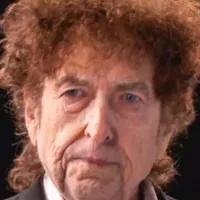
Bob Dylan is a highly influential American singer-songwriter renowned as...
California is a U S state on the Pacific Coast...
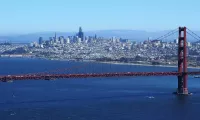
San Francisco is a major commercial financial and cultural hub...
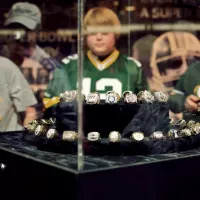
The Super Bowl is the annual championship game of the...
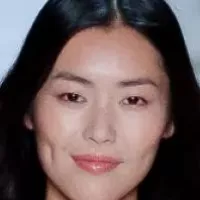
A fashion show is an event held by designers to...
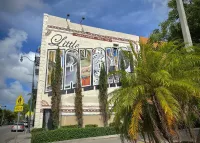
Miami is a major coastal city located in Florida United...
Trending
Evan Engram is an American football tight end currently playing for the Denver Broncos A former Ole Miss Rebel where...
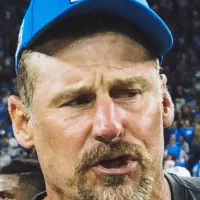
17 days ago Dan Campbell and Lions still upset about controversial 'Dan Skipper Game' loss to Cowboys.
Darnell Washington nicknamed Mount Washington is a professional football tight end currently playing for the Pittsburgh Steelers in the NFL...
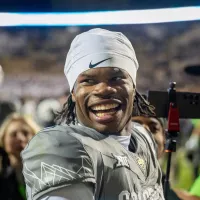
4 months ago Travis Hunter's College GPA Sparks Buzz After NFL Debut; Coach Praises Skillset.

9 months ago Joe Milton Traded: Patriots Send Quarterback to Cowboys in Draft Pick Exchange
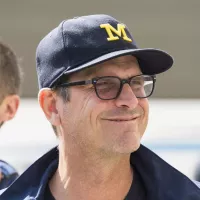
Jim Harbaugh is an American football coach currently the head coach of the Los Angeles Chargers Previously he coached the...
Popular

Candace Owens is an American conservative political commentator and author...

Tucker Carlson is an American conservative political commentator known for...

XXXTentacion born Jahseh Dwayne Ricardo Onfroy was a controversial yet...

Ben Shapiro is a prominent American conservative political commentator media...

William Franklin Graham III commonly known as Franklin Graham is...

Bill Gates an American businessman and philanthropist revolutionized personal computing...
